
Today’s businesses are rapidly adopting agile and DevOps to achieve faster and quality releases. DevOps methodology embeds faster releases achieved through continuous integration and continuous delivery of software along with continuous testing. Many software testing methods such as functional, regression, performance, security testing, etc., are leveraged to ensure high-quality products. Out of these methods, the functional testing method plays a major role in the software release in the agile and DevOps processes. It helps businesses achieve fully functional and high-quality software in less time through faster and quality releases.
Table of Contents
- Functional testing Overview
- Types of functional testing methods
- Why do businesses need functional testing?
- Differences between functional testing and non-functional testing
- Unit testing vs Regression testing vs Functional testing
- How to do functional testing?
- Functional test case examples
- Significance of Functional testing in Agile
- Significance of functional testing in DevOps
- Various functional testing tools
- Conclusion
Functional testing Overview
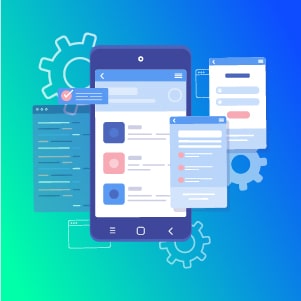
Functional testing in software testing is a black box type of software testing, and quality assurance method performed to test the software’s functionality and its related components. The main aim of this testing type is to validate the functionalities of an application against business requirements by providing certain inputs and validating the outputs.
Types of functional testing methods
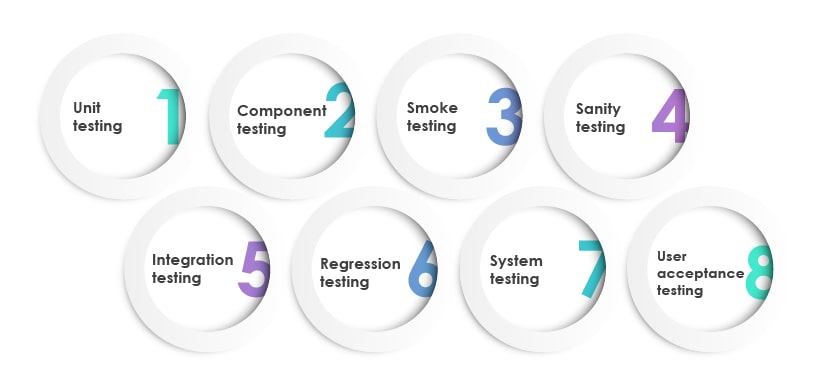
1. Unit testing:
It is the first phase of the software testing process, where developers test the smallest possible units of the software in isolation to validate its functionality.
2. Component testing:
In this software testing type, software components are tested individually without integrating them with other components.
3. Smoke testing:
This form of testing is also named build verification testing, which is used to determine the stability of the software. It helps testers know whether the code can be shared for further testing.
4. Sanity testing:
In this software testing technique, testers perform basic tests on the software. Whenever the build is received after some changes, this testing type is performed to ensure the bugs are fixed and the software functions properly.
5. Integration testing:
In this software testing type, various individual software modules are combined and tested as a group to ensure their proper functioning.
6. Regression testing:
In this software testing method, the software is tested to ensure that recent code changes or newly added functionalities do not affect the existing functionalities of the software.
7. System testing:
In this testing type, the quality assurance team evaluates the software to know how various components interact together. It ensures that the software works properly.
8. User acceptance testing:
In this testing method, the end-user/client/product owner tests the product to verify its functionality and usability before it is released in the market.
Why do businesses need functional testing?

• It helps to improve the quality of the software
• Helps to verify the software functionality based on Software Requirements Specification (SRS) and ensures the system functions as per the user specifications.
• Helps to test specific error conditions and other important functions of the software.
• Helps to achieve fully-functional software which is defect-free to deliver a great CX.
Differences between functional testing and non-functional testing
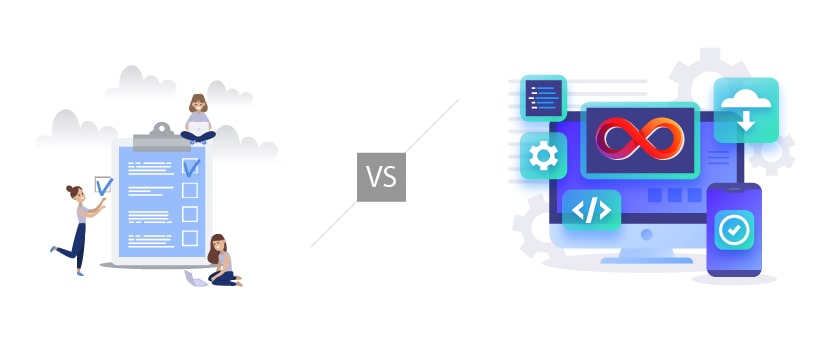
| Tests the functionalities/features of the software | Test the non-functional aspects of the software, such as performance, usability, accessibility, etc. |
| Validates outputs against the inputs to ensure software functions properly | Validates the app against defined SLAs or standards to ensure all the non-functional testing requirements are met. |
| Focuses on end-user requirements | Focuses on end-user experience |
| Describes the behavior of the system | Describes usability/performance of the system |
| It is based on functional testing requirements of the software | It is based on non-functional testing requirements of the software |
| Various testing types:• Smoke testing• Sanity testing• Unit testing
• Component testing • Integration testing • System testing • Regression testing • User Acceptance testing |
Various testing types:• Performance and load testing• Security testing• Usability testing
• Accessibility testing • Compatibility testing • Localization testing |
Unit testing vs Regression testing vs Functional testing
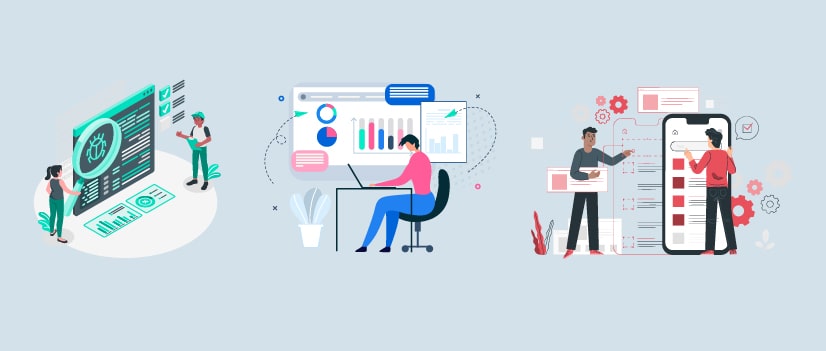
| Tests the code in isolation to ensure it functions well | Tests the existing code to ensure it remains unaffected due to recent code changes | Tests the functionality of the software to ensure it works well |
| It is not complex, as small codes are tested in isolation | It is complex, as software is to be tested repetitively after every code change | It is complex, as the whole software is to be tested |
| To perform unit testing, the white box testing technique is used | Either a white box or black box testing technique can be used to perform regression testing | To perform this testing method, the black box testing technique is used |
| Focuses on the smallest possible units/codes of the software | Focuses on existing functionalities/features of the software | Focuses on the entire software |
| Performed by developers and also testers sometimes | Performed by testers | Performed by testers |
| Cost and maintenance are low | The cost of maintenance is comparatively higher than unit testing. But, it is said to be lower than the cost of fixing a production defect | The cost of maintenance is comparatively higher than unit testing. But, it is said to be lower than the cost of fixing a production defect |
| There are no further types in this testing method | Testing types:• Corrective regression testing• Retest-all regression testing• Selective regression testing
• Progressive regression testing • Complete regression testing • Risk-based regression testing |
Testing types:• Smoke testing• Sanity testing• Unit testing
• Component testing • Integration testing • System testing • Regression testing • User acceptance testing |
How to do functional testing?
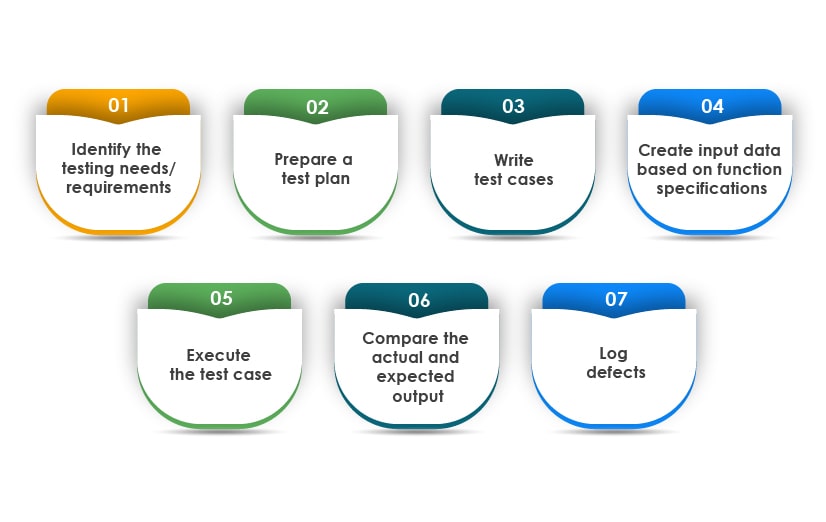
1. Identify the testing needs/requirements:
The first step of functional testing involves the testers who need to understand the business requirements and take a stance on the testing needs in detail.
2. Prepare a test plan:
The next step involves preparing the test plan. The test plan should clearly state the objective of the test, test methods, testing techniques, etc.
3. Write test cases:
It is an essential step wherein testers create test cases. The functional test cases should be prepared in a way that ensures maximum test coverage.
4. Create input data based on function specifications:
Now, to test the specific functionality of an application, testers have to create data and use it as an input. The data that is used to test the application is known as input data.
5. Execute the test case:
Testers execute the test cases using the input data that are identified during the preparation of test cases.
6. Compare the actual and expected output:
This is an essential step, where testers compare the actual output with the expected outcome. It is done to determine whether the test is a pass or a fail.
7. Log defects:
In the last step, testers note the variations between actual and expected outcomes and log these variations or defects to let teams know about the same.
Functional test case examples
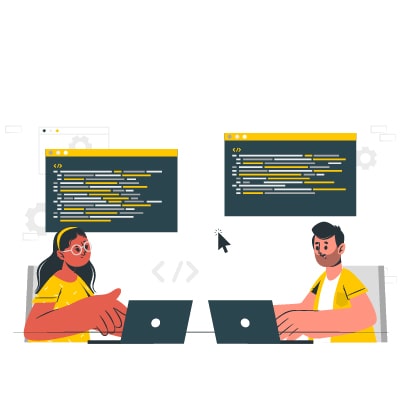
Situation: Suppose there is an online music app, and below are the set of test cases to be evaluated:
• User logs in with user account and password
• The login page contains two text fields, i.e., username and password
• It also has options, i.e., login and cancel
• When the user enters the correct credentials, the action is successful, and the login page directs the user to the music app home page
• If the user clicks on the cancel option, the login is canceled
| TC 01 | User Id – Minimum 6 characters, Maximum 10 characters, numbers (0-9), Letters (a-z, A-z), Special characters (only underscore, period, hyphen allowed)Password – Minimum 6 characters, Maximum 8 characters, Numbers (0-9), Letters (a-z, A-Z), All special characters*Both ID and password cannot be left blank | 1. Open music app2. Enter incorrect User ID and Password3. Click on the Login button | An error message should be displayed stating “Invalid ID or Password” |
| TC 02 | User Id – Minimum 6 characters, Maximum 10 characters, numbers (0-9), Letters (a-z, A-z), Special characters (only underscore, period, hyphen allowed)Password – Minimum 6 characters, Maximum 8 characters, Numbers (0-9), Letters (a-z, A-Z), All special characters*Both ID and password cannot be left blank | 1. Open music app2. Enter correct User ID and Password3. Click on the Login button | The user should be directed to the music app home page |
Significance of Functional testing in Agile

In traditional testing models like the waterfall model, the development and testing of the software happen one after the other, and usually, testing starts once the development is complete. However, in agile methodology, the product is simultaneously developed and tested in sprints, and features are rolled out in each cycle.
In an agile environment, at one end, the developers develop the software, adds new features, or make improvements to the code, while simultaneously, on the other hand, testers perform functional testing of the software. If some changes are introduced to the software, regression testing is performed to ensure the software’s existing functionality remains unaffected.
Common functional testing types performed in an agile environment include smoke, sanity, unit, component, etc. Functional testing in agile speeds up the software testing process, ensures early identification and removal of defects, enhances collaboration between teams and saves time.
Significance of functional testing in DevOps

In a DevOps environment, the main focus is building, testing, and releasing the software faster and more frequently. DevOps streamlines and automates the entire software delivery lifecycle by integrating it with the Continuous Integration (CI) and Continuous Delivery (CD) pipeline. In DevOps, everything starting from development to the software release is continuous and automated. The software is continuously developed, continuously tested, continuously integrated, continuously deployed, and continuously monitored.
Automated DevOps functional testing is performed at each stage of the DevOps CI/CD pipeline to ensure software quality. During the development stage, unit testing is performed to ensure code quality. Also, in the DevOps environment, developers frequently commit changes to source code and merge those code changes to a central repository. Regression testing is performed to ensure code changes do not break the software’s existing functionality. At the continuous integration stage, integration testing is performed to ensure the proper integration of all codes and modules. Finally, the whole software is tested by leveraging system testing techniques to ensure the proper functioning of the software. This is how functional testing fits in the DevOps environment and helps businesses achieve high-quality software.
Some of the benefits of functional testing in DevOps include it helps to remove functional defects from the software much early and faster, ensures the software quality starting from build stage to release stage, delivers fully-functional software in less time, eliminates the chances of manual errors, as the process is automated, and saves significant time and cost.
Various functional testing tools
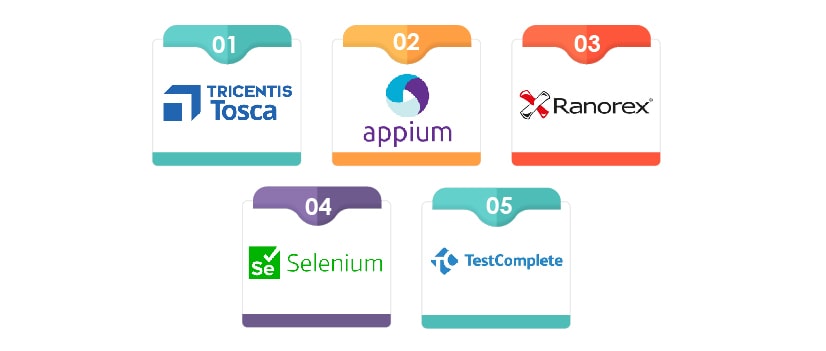
Tricentis Tosca:
It is an intelligent test automation tool that can be used to test the software’s functionality. This tool allows continuous testing and integrates easily into the DevOps CI/CD pipeline.
Appium:
It is an automated software testing tool that can be used to test the functionality of native, hybrid, and mobile web applications. This tool allows testers to test mobile apps on various platforms, such as android, iOS, and Windows. This test automation tool supports various languages and works on JSON wire protocol (extension of Selenium JSON wire protocol).
Ranorex:
It is an all-in-one test automation tool for desktop, mobile, and web. This tool allows codeless test automation and can be used for testing software functionality. This software testing tool supports cross-browser and cross-platform testing. Ranorex easily integrates with the DevOps pipeline.
Selenium:
It is one of the widely used test automation tools best suited for web applications. This tool has various components, such as Selenium WebDriver, Selenium IDE, and Selenium Grid. This automation testing tool supports a majority of OS, browsers, and languages. Selenium also has a record and playback feature that makes software testing easy.
TestComplete:
It is a widely used test automation tool for mobile, desktop, and web. This tool supports various languages and can be used to perform keyword-driven and data-driven testing.
Conclusion
Today’s businesses are rapidly adopting agile and DevOps processes to achieve quality software in less time. But the quality of the software depends on its proper functioning, which can be ensured through end-to-end functional testing. This testing type helps businesses in many ways, such as improving the functionality of the software, enhancing customer experience, and saving significant costs. Businesses should leverage end-to-end functional testing from a next-gen QA and independent software testing services provider to achieve high-quality software in less time.
Discover more
Get in Touch
Stay Updated
Subscribe for more info




